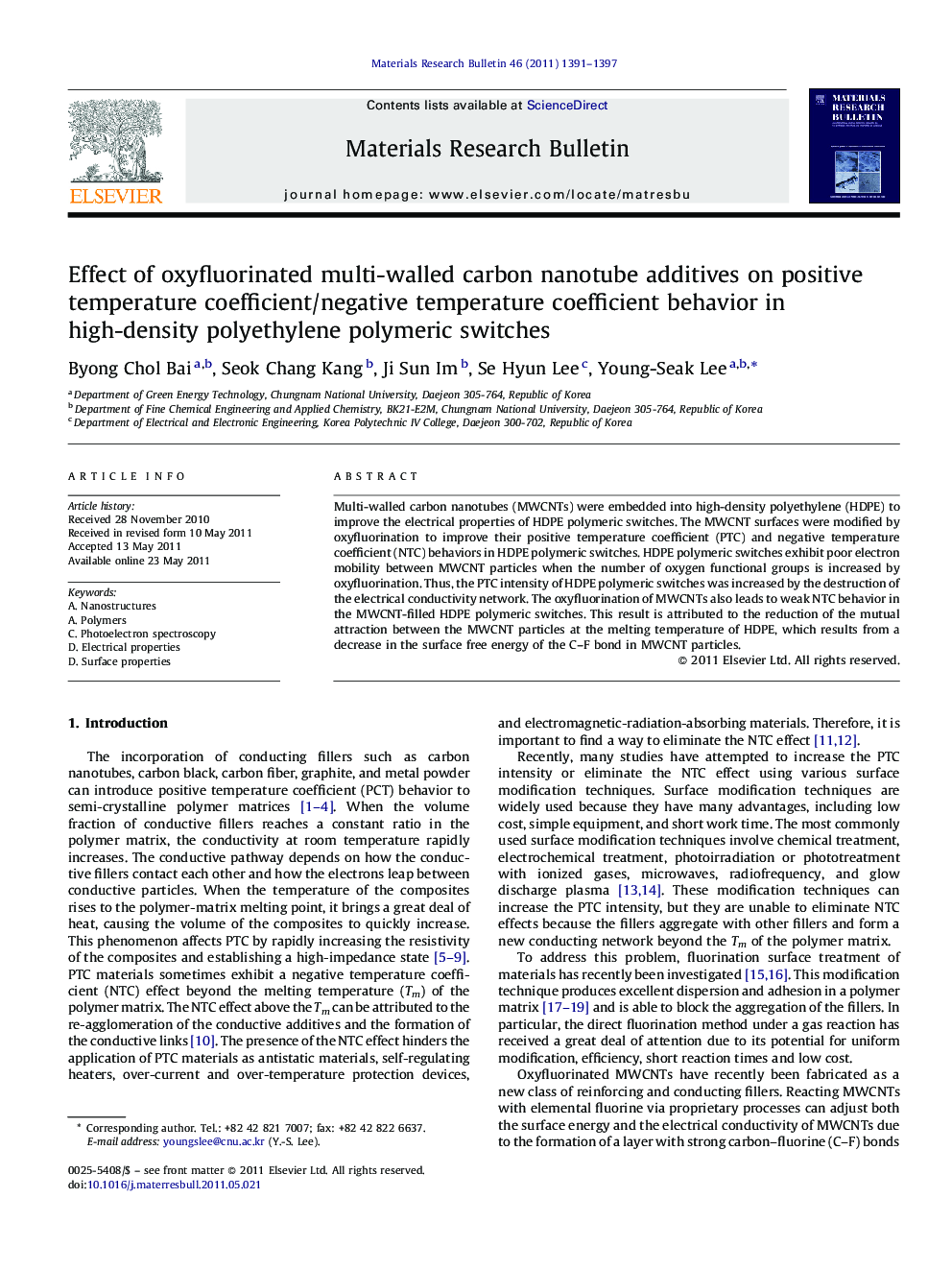| Article ID | Journal | Published Year | Pages | File Type |
|---|---|---|---|---|
| 1490309 | Materials Research Bulletin | 2011 | 7 Pages |
Multi-walled carbon nanotubes (MWCNTs) were embedded into high-density polyethylene (HDPE) to improve the electrical properties of HDPE polymeric switches. The MWCNT surfaces were modified by oxyfluorination to improve their positive temperature coefficient (PTC) and negative temperature coefficient (NTC) behaviors in HDPE polymeric switches. HDPE polymeric switches exhibit poor electron mobility between MWCNT particles when the number of oxygen functional groups is increased by oxyfluorination. Thus, the PTC intensity of HDPE polymeric switches was increased by the destruction of the electrical conductivity network. The oxyfluorination of MWCNTs also leads to weak NTC behavior in the MWCNT-filled HDPE polymeric switches. This result is attributed to the reduction of the mutual attraction between the MWCNT particles at the melting temperature of HDPE, which results from a decrease in the surface free energy of the C–F bond in MWCNT particles.
Graphical abstractThe electrical properties of MWCNT-filled HDPE polymeric switches and their effect on oxyfluorination.Figure optionsDownload full-size imageDownload as PowerPoint slideHighlights► Oxyfluorinated MWCNTs were used to reduce the PTC/NTC phenomenon in MWCNT-filled HDPE polymeric switches. ► Electron mobility is difficult in MWCNT particles when the number of oxygen functional groups (C–O, CO) increases by oxyfluorination. ► A mechanism of improved electrical properties of oxyfluorinated MWCNT-filled HDPE polymeric switches was suggested.
